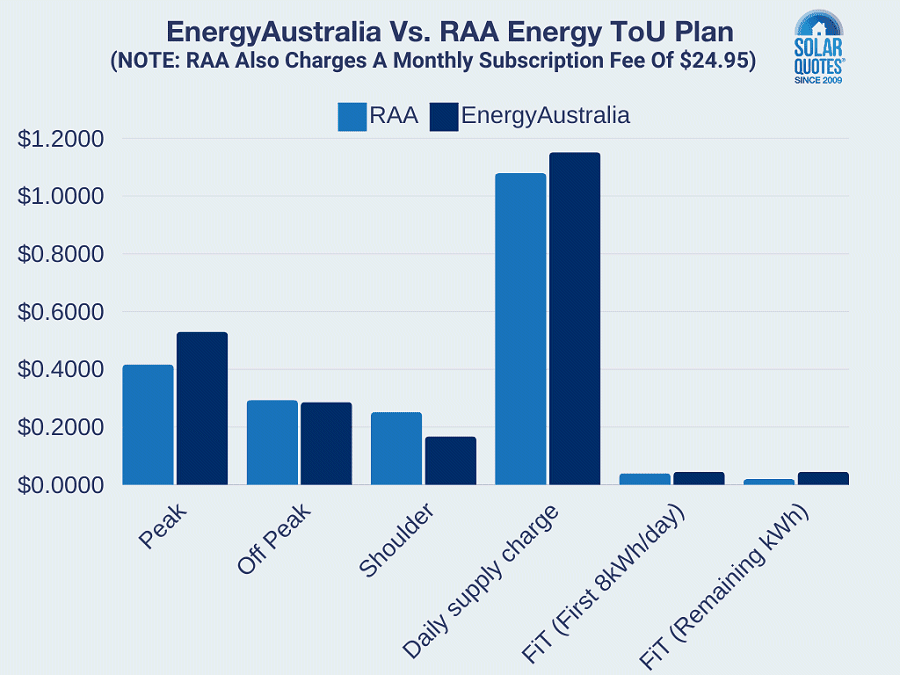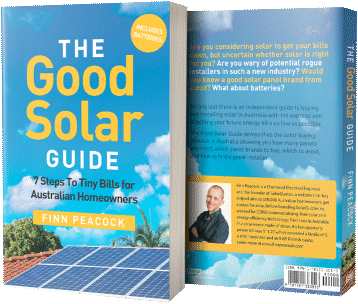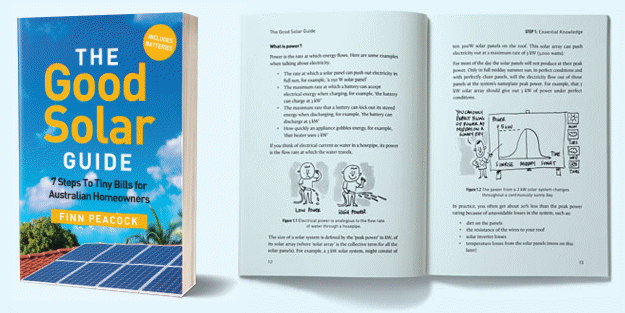RAA Energy officially launched yesterday in South Australia, offering members-only electricity plans. So, how much does RAA’s “electrifying offer” cost and what’s with the bearded bee guy?
RAA was founded by a small group of motoring pioneers in 1903. Today it boasts more than 820,000 members and offers a bunch of services beyond those related to motoring – home insurance, home services and now electricity to name a few.
In August the organisation announced it was “set to shock local energy market” with what it said would be a “trusted, fair and transparent energy plan”. Yesterday the wraps came off it.
“RAA Energy is different – we don’t profit from the energy you use,” said RAA CEO Nick Reade.
However, there’s a not-insignificant monthly subscription fee of $24.95 that “helps cover the cost to keep our lights on,” said Mr. Read. Members taking up the plan will also give the organisation added opportunities to put its solar and battery installation service in front of them; not that there’s anything wrong with that.
Comparing A Pair
RAA Energy is a trading name of electricity retailer Energy Locals Pty Ltd. So, how does RAA Energy stack up? I put my address details into its plan finder and the only offer presented was a Time-of-Use (ToU) plan:
- Monthly subscription fee: $24.95
- Peak (6:00am to 9:59am, 3:00pm to 12:59am) – 41.67 c/kWh
- Off Peak (1:00am to 5:59am) – 29.32 c/kWh
- Shoulder (10:00am to 2:59pm) – 25.19 c/kWh
- Daily supply charge – 107.94 c/per day
- Solar feed-in tariff (First 8 kWh Daily) – 4.00 c/kWh
- Solar feed-in tariff (Remaining kWh) – 2.00 c/kWh
Now let’s look at one of the big retail players, Energy Australia. The following rates are for the same address after the 7% discount offered is applied, and the tariff timeframes are the same as RAA.
- Monthly subscription fee: $0
- Peak – 52.99 c/kWh
- Off Peak – 28.64 c/kWh
- Shoulder – 16.78 c/kWh
- Daily supply charge – 115.19 c/per day
- Feed-in tariff (First 8 kWh Daily) – 4.5 c/kWh
- Feed-in tariff (Remaining kWh) – 4.5 c/kWh
Here’s the comparison in a graph.
Annual Estimated Costs Compared
The lowest annual price for an average customer (4,000 kWh) is $2,139 says RAA. This price estimate is based on an average residential customer using 4,000 kWh annually and doesn’t take into account feed-in tariff credits. What I’m not clear on is whether that includes the monthly subscription fee, which over a year works out to be $299.40. UPDATE 1 November: RAA have let us know that the estimate includes the monthly subscription fee.
For average electricity usage in my area (4,000 kWh yearly – so apples-to-apples), EnergyAustralia says this plan has a lowest possible price of $2,074 (again, without FiT). So, it’s a bit cheaper than RAA’s based on those figures.
Of course, your own mileage will vary based on how and when you use energy and note that EnergyAustralia’s peak rates are much higher than RAA’s. The comparison above isn’t to say that EnergyAustralia necessarily offers the best deals in SA; whichever company does will depend to some degree on your own circumstances.
And on that note …
Navigating Electricity Retailers
Comparing electricity retailers can be a pain in the butt, but it’s important to check fairly regularly to ensure you’re on the best plan for your situation.
For owners of solar power systems (and even for those who aren’t), SQ has made this onerous task easier with our electricity plan comparison tool that includes feed-in tariff rates. Just bear in mind the best plan has a balance of (comparatively) high feed-in-tariffs, low usage tariffs and low daily charges. We don’t have RAA plans in the tool yet, but no doubt they’ll be added in the not-too-distant future.
As for the deal with RAA’s bearded bee guy – I have absolutely no idea. But the slogan accompanying the pic above was “Excessive electricity bills are toast”.



 RSS - Posts
RSS - Posts



I suspect the RAA Energy Offer (TOU) will suit those homes with limited day-time use and high breakfast/afterwork usage, ie those with high consumption in the 3pm-1am and 6am-10am windows. Typically these are people who are at work during the day and so an empty house.
RAA’s 41.67 c/kWh peak offers a lot compared to Energy Australia’s 52.99 c/kWh. It will vary for each individual, and that high supply/membership fee at RAA will hurt.
I presume for those who have 12 months of interval meter consumption that the AER’s ‘Energy Made Easy’ will tell a customer if this is a contender for them.
James B
I’m convinced that ToU charges were conceived to capture exactly those people who are at work during the day and have their main electricity use during the peak times. That way they can make more money whilst claiming that they want to change peoples’ usage.
For people in this situation a flat charge (if they can get it) would suit their usage better.
For example one of the plans from a major retailer in NSW charges a flat rate of $0.2742, a supply charge of $0.7657 per day and a FiT 0f $0.05.
On a plan like that you wouldn’t be nervous about coming home and cooking a roast dinner for the family.
Of course it could be argued that people should give up their day job to cook and clean between 10am and 3pm and thus avoid using peak hour electricity.
Hi Chris,
Nobody even complained about ceding some control to the networks for “off peak” power.
Now the cheapest energy is daytime tariff, there’s some economic realities that underpin Time Of Use.
https://www.solarquotes.com.au/blog/stealing-electricity/
Hi Anthony
We’ve been down this road before. The odds are always stacked with the house whilst the poor punters have to muddle their way through.
I’m sure most viewers on this site are all over their energy consumption whilst others may not be as knowledgeable.
Surely these prices can’t be that good that they would get a write up on this site. My figures in brackets
Monthly subscription fee: $24.95 [$0]
Peak (6:00am to 9:59am, 3:00pm to 12:59am) – 41.67 c/kWh [$0.2742]
Off Peak (1:00am to 5:59am) – 29.32 c/kWh [$0.2742]
Shoulder (10:00am to 2:59pm) – 25.19 c/kWh [$0.2742]
Daily supply charge – 107.94 c/per day [$0.7657]
Solar feed-in tariff (First 8 kWh Daily) – 4.00 c/kWh [$0.05]
Solar feed-in tariff (Remaining kWh) – 2.00 c/kWh [$0.05]
Where’s the savings on the ToU?.
Thanks for your review of RAA Energy. We’re proud to offer fair and transparent electricity without the retail mark-up to our members.
To clarify your question on if the estimate includes our monthly subscription fee in its calculation, the answer is yes. The estimated weekly/monthly/yearly costs include usage rates, daily supply charge and our monthly subscription fee.
DMO reference prices across the industry do not include Feed-in-Tariff credits. RAA Energy is offering 4c/kWh for the first 8kWh per day and 2c/kWh thereafter. As you know, the best thing people with solar can do is to use as much of the solar they generate as they can reduce their electricity bills.
As well as transparent pricing, we will provide members with monthly billing options, home solar or battery assessments and personalised energy insights to help them really understand their energy use and how they can get their bills down further.
We hope this helps clarify things.
RAA Energy
Michael, I am curious to know how does one enter the two-tiered FIT in Solar.Web. It seems Solar.Web can only accommodate tiered FITs based on time of day, not kWh.
Don’t deal with the RAA I have a battery so I have a very accurate idea of the electricity I use.
I stupidly changed to the RAA because all my other insurance is with the RAA
Silly move they sent me a bill for $100 for electricity for 1 month plus supply etc.
Happy to pay for supply and connection, but not the $100 for electricity when I actually used $5.
There representative tried to blame my previous supplier, but that didn’t make sense.
So you have pathetic representatives, a pathetic account system, avoid like the plague.